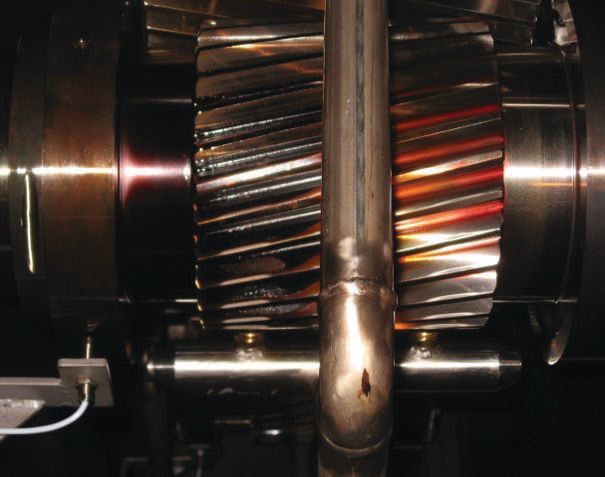Color me fooled
Evan Zabawski | TLT From the Editor July 2017
Lookin’ for varnish in all the wrong places.

How can you find out if your system is varnishing?
“WHAT'S IN A NAME?” Shakespeare’s Juliet supposed that names of things did not matter, be they a rose or her love, Romeo. However, when it comes to insoluble degradation products in oil, and the testing for the presence of said products, names are very significant differentiators.
The most popular method for attempting to quantify varnish within a circulating system is to submit a sample of the fluid to a lab for membrane patch colorimetry (MPC). In its infancy, MPC was commonly referred to as the varnish potential test, since a high MPC result suggested a strong potential for varnish. However, a high result can merely indicate that the fluid contains elevated levels of insolubles but not really confirm they are depositing.
ASTM defines varnish as “a thin, hard, lustrous, oil-insoluble deposit, composed primarily of organic residue, and most readily definable by color intensity” and states that MPC measures the color concentration of the insoluble contaminants extracted from a sample of in-service fluid. Though the term insoluble is applied to degradation products in both suspended and deposited forms, they are not as directly related as is commonly presumed.
To understand why, consider the analogy where insolubles are water in a rain cloud and varnish is the water in the puddle that forms after the rain. Both rain and puddles are very different forms of water, the same way insoluble degradation products in both suspended and deposited forms are different. Varnish is simply used to differentiate the deposited form.
MPC testing would be akin to measuring the rainfall in one small moment of time. If the rainfall is quite heavy we would presume the resulting puddles would be large, but we have no way of knowing the duration of the rain, which can have a significant impact on puddle formation. As well, it is possible that we might take our measurement as the rain is dissipating, and we wouldn’t know that large puddles have already formed. However, if we performed several measurements over a period of time, we would have a better idea about the amount and rate of rainfall, which would help predict if we should expect to find large puddles.
In the same way that we can’t assume total rainfall or puddle volumes from a snapshot of the current rainfall, we can’t necessarily know if the insolubles from a single MPC test are depositing or have already deposited, but we get a better idea through trending of repeated samples.
Today, it is understood that even systems exhibiting low MPC results may find heavy deposits during physical inspection. This scenario tends to occur when there is a very high and localized thermal stress, such as a hot bearing, where the varnish may form and deposit entirely within the bearing assembly, and therefore not appear in the fluid analysis. If the rate of deposition is relatively equal to the rate of formation, MPC results will remain stable at any level, even when MPC is <10. The likelihood the insolubles will deposit is higher when the trend of MPC increases, and the indication they likely have deposited is when the trend of MPC plateaus or suddenly decreases without a corrective action taken.
Once we have an understanding that varnish is but one form of insolubles, and that the MPC test is not measuring insolubles in that form, we can appreciate why it should not be referred to as the varnish potential test. And since MPC testing—nor any other laboratory test—does not provide a clear answer regarding the amount or severity of varnish likely to be found within a system, the question remains: How can you find out if your system is varnishing?
To that I can only provide the same tongue-in-cheek answer I gave during a presentation at the 2011 STLE Annual Meeting in Atlanta where I unveiled the OYEAL® test. A test purportedly developed by Dr. Jauqsunyu, but in reality, it is merely a simple acronym for Open Your Equipment and Look.
 Evan Zabawski, CLS, is the senior technical advisor for TestOil in Calgary, Alberta, Canada. You can reach him at ezabawski@testoil.com
Evan Zabawski, CLS, is the senior technical advisor for TestOil in Calgary, Alberta, Canada. You can reach him at ezabawski@testoil.com.